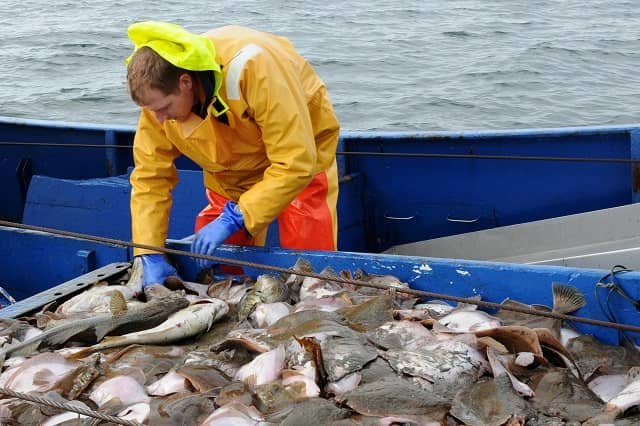by University of British Columbia
Contrary to what is stated in biology textbooks, the growth of fish doesn’t slow down when and because they start spawning. In fact, their growth accelerates after they reproduce, according to a new article published in Science.
“Fish don’t have to choose between growth or reproduction because, in the real world, they don’t occur simultaneously but rather sequentially,” says University of British Columbia (UBC) fisheries researcher Dr. Daniel Pauly, co-author of the technical comment published in Science with Dr. Rainer Froese, senior scientist at Germany’s Geomar Helmholtz Center for Ocean Research.
“Fish use only 10% to 20% of their energy for each of these two activities, the rest being mainly devoted to other activities, such as darting about when predators approach,” adds Dr. Pauly, who leads the Sea Around Us research initiative at UBC. “This means that reducing the movement rate, given the same food and oxygen consumption, can easily produce the savings required for growth or reproduction. This is the reason, incidentally, why fish farmers raise fish which have been selected to be calmer than their wild congeners.”
The comment is a response to a previous study which erroneously claims growth ceases when fish reproduce because they dedicate all of their energy to such activity.
Based on a growth equation widely used in fisheries science, the authors of the initial paper claimed that the growth of the Atlantic horse mackerel from the North Sea stock slows down with the onset of reproduction. Yet, they did not report on the size at which this fish actually matures and spawn.
Dr. Pauly and Dr. Froese revisited the study and included maturation and spawning trends. Their work demonstrated that the very evidence advanced to support the traditional, textbook claim shows the contrary: horse mackerel actually grow faster after spawning for the first time.
“This case is not unique,” Dr. Pauly says. “If we ran the numbers using the growth parameters and size at first maturity available for hundreds of fish in FishBase, the online encyclopedia of fish, we would get the same results.”
According to the comment, there’s a lack of support for the notion that reproduction impacts growth, even in mammals. “Pets that are neutered or spayed exhibit the same growth trajectories as their parents,” says Dr. Froese. “Also, the dominant males in harem-building species, such as sea lions, don’t cease growing and they become bigger than bachelors, even though they are dedicating a lot of their resources to reproduction.”
Stay Always Informed
Join our communities to instantly receive the most important news, reports, and analysis from the aquaculture industry.
In fish, the oxygen needed for growth is supplied by gills surfaces through which water must flow—a bit like the wind through blinds. Gill surface area grows in two dimensions, that is, in length and width, but they cannot keep up with fish’s bodies, which grow in three dimensions, length, width and depth. Thus, as fish get bigger, they have less gill surface area and their gills provide less oxygen per unit volume or weight.
“There is a point when the growth of individual fish leads to a decline in its relative gill surface area, which generates a critical level of oxygen supply. This ‘tells’ the fish that it has reached a stage in which it should mature and spawn,” says Dr. Pauly. “When a fish spawns, it loses gonadal tissue that previously had to be supplied with oxygen and thus its relative gill area increases, which facilitates renewed growth until the next spawning season.”
Reference (open access)
RAINER FROESE y DANIEL PAULY. 2023. Comment on “Metabolic scaling is the product of life-history optimization”. SCIENCE, 28 Apr 2023 Vol 380, Issue 6643. DOI: 10.1126/science.ade6084
Editor at the digital magazine AquaHoy. He holds a degree in Aquaculture Biology from the National University of Santa (UNS) and a Master’s degree in Science and Innovation Management from the Polytechnic University of Valencia, with postgraduate diplomas in Business Innovation and Innovation Management. He possesses extensive experience in the aquaculture and fisheries sector, having led the Fisheries Innovation Unit of the National Program for Innovation in Fisheries and Aquaculture (PNIPA). He has served as a senior consultant in technology watch, an innovation project formulator and advisor, and a lecturer at UNS. He is a member of the Peruvian College of Biologists and was recognized by the World Aquaculture Society (WAS) in 2016 for his contribution to aquaculture.



